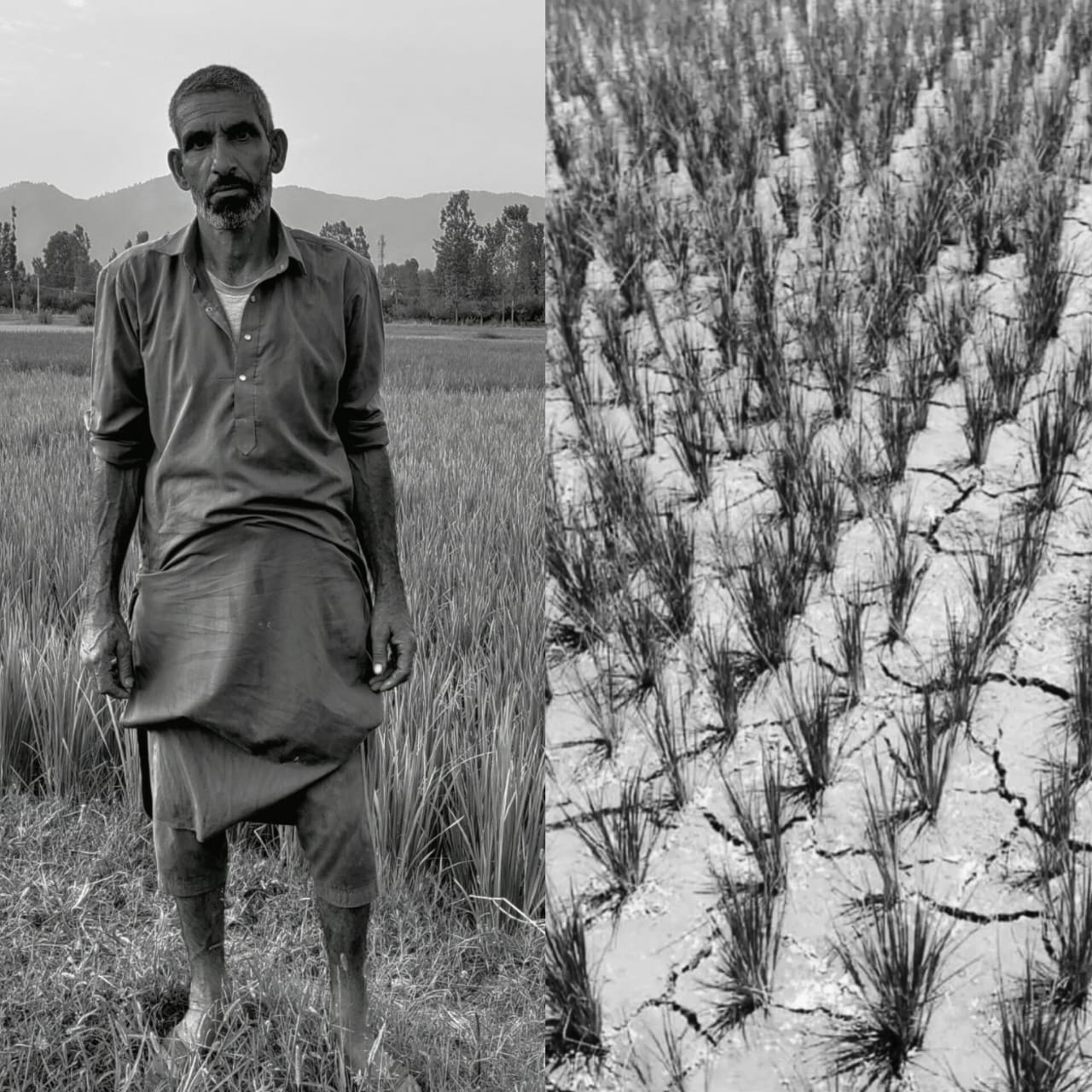Farmers Face Crop Failure:-
Ghulam Nabi a dedicated farmer, stood in his field, staring at the sight that had come to haunt his dreams. The ground, once moist and fertile, was now cracked and dry. The young rice plants struggled to stay upright, their roots clawing desperately for any trace of moisture. The vibrant green that once blanketed the field was now a patchwork of faded, dying plants. Ghulam who once looked to their fields with hope, now faces the grim reality of crop failure. The golden waves of rice, swaying gently in the breeze, have turned into a brittle wasteland, echoing the despair of those who toil upon it. Ghulam Nabi and his fellow villagers did everything they could to save their crops. They rationed water, using every drop sparingly, hoping it would be enough. They prayed to the gods, performing rituals and making offerings, pleading for rain. But their efforts were in vain.

The drought tightened its grip, turning their fields into barren wastelands. People go out at night to irrigate the fields. According to Ghulam I have a wife and children, and I also go out at night, risking my life to water the fields. We risk our lives because if we don’t have rice, we will starve to death. The most important thing is that Climate change is a major factor contributing to the increased frequency and intensity of droughts. Rising global temperatures lead to altered weather patterns, causing some regions to experience prolonged dry spells. Higher temperatures also increase the rate of evaporation, reducing the amount of water available for crops. The primary and most immediate cause of the condition shown in the image is the lack of sufficient rainfall. Without adequate rain, the soil dries out, leading to the cracks seen in the image. This situation can quickly escalate into a severe drought if the dry conditions persist. Inefficient water management practices exacerbate the effects of drought. In many agricultural areas, water is not used efficiently or sustainably. Traditional irrigation methods, such as flood irrigation, often wastewater and fail to deliver it evenly across the fields. Without proper water management systems in place, the land becomes more vulnerable to drought conditions. We have an incomplete water scheme that the government has taken a long time to address. We appeal to the government to resolve our water issue as soon as possible.
Qaum ka har ek kisan, hai musibat ke shaheed,
Suhane khwabon ki mitti, ab sirf raaz hai zameen par.
Har boond jo baarish ki thi, ab sirf ek yaad hai,
Sukha ke is saavan ne, kuch khwabon ko chhoda hai.
FAQs about Drought Devastation in Rice Fields:-
What is causing the drought that is affecting rice fields?
The drought impacting rice fields is primarily due to a combination of prolonged dry weather patterns, lack of adequate rainfall, and climate change effects. These factors lead to soil moisture depletion, which is critical for rice growth.
How does drought specifically affect rice crops?
Rice is a water-intensive crop, requiring consistent irrigation and moisture for optimal growth. Drought conditions can lead to stunted growth, lower yields, and in severe cases, complete crop failure. Drought can also make rice plants more susceptible to diseases and pests.
What measures can farmers take to mitigate the effects of drought on their rice fields?
Farmers can adopt various strategies, including the use of drought-resistant rice varieties, improved irrigation techniques (like drip irrigation), mulching to retain moisture, and soil management practices to improve water retention.
What role does climate change play in the increasing frequency of droughts?
Climate change contributes to more extreme weather patterns, including prolonged drought conditions. It alters precipitation patterns, leading to unpredictable rainfall and temperature changes, which can severely affect agricultural productivity.



